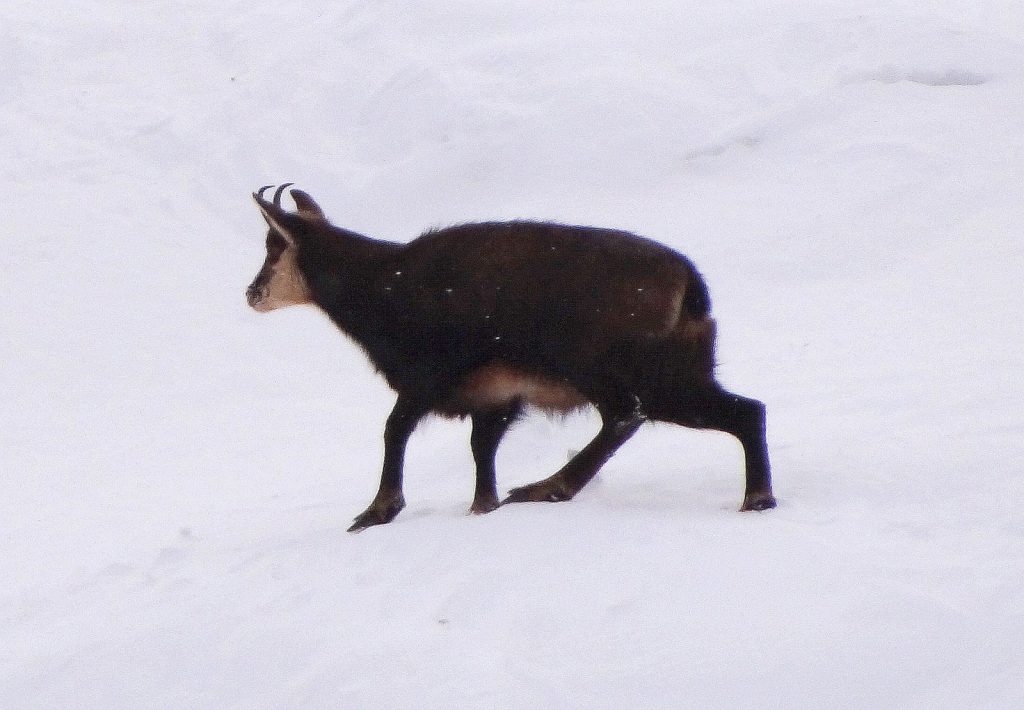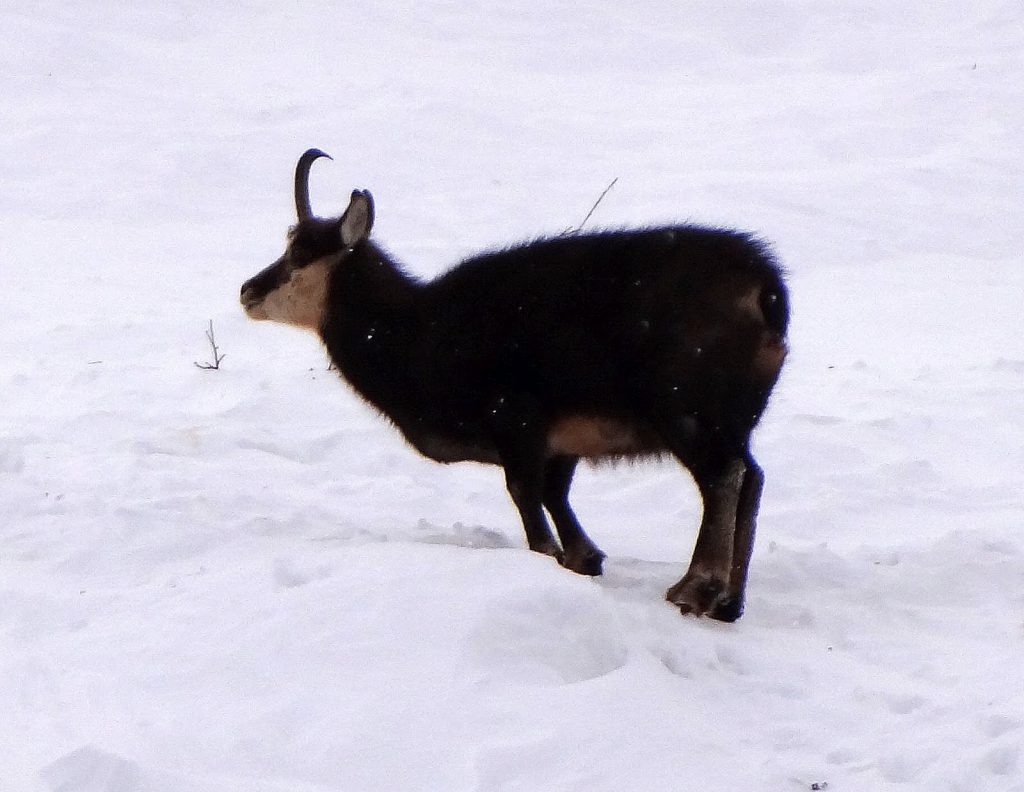The first exercise we started off with was simple “double carving” from the fall line across the hill. The skis are placed parallel, facing downhill, one on the inside edge and one on the outside edge – depending on which direction the skier will carve – similar to traversing but facing downhill on a gentle gradient. Rodion has no difficulty in holding the skis on edge and tracking or “railing” along the edges. The important issue here comes from moving very slowly. Where there are no dynamics due to very low speed, the skier has to balance between the two skis (similar to snowplough) and the only way to do this is to use hip angulation to get the centre of mass between the skis – with the upper-body slightly turned towards the outside ski. This provides a slow, safe platform for developing awareness of hip angulation. Rodion had trouble at first creating hip angulation because he kept his upper body far too upright. The required position is similar to a speed skater – with the upper-body tilted forward at the hip joints. Progressively, he managed to improve this and to maintain a symmetry with his legs.
As speed increases balance is replaced with dynamics (accelerations) and the pressure is more oriented towards the outside ski in the turn. The important thing here is to not permit this shift to cause a loss of symmetry and disorganisation of the body. Rodion was able to take the “balanced” stance into dynamics with a reasonable amount of success.
Skating Without Skating
Downhill Power Skating
I also explained to Rodion that the angulation and anticipation (body facing outwards through the turn completion) allowed the skier to skate in the sense that the body would face downhill and the legs skate off to the side – exactly like trying to skate fast downhill, but that the ski would curve back in, underneath and in front of the skater/skier and that by sinking down (with hip angulation) the skate could be held as long as necessary to complete a direction change – springing back up to complete the turn. This extra down-sinking being the main difference from normal skating.
Two Skis Skating
I demonstrated the carving with strong down/up motion generating a lot of force and Rodion described it as looking like I was skating with both skis at the same time. This is correct and showed me that he is understanding – because you can only see things that you understand. Rodion was able to then integrate everything and feel all of this for himself – to the extent that he now recognises the correct feelings.
We had unknowingly lost communications with the rest of the family because my phone had mysteriously switched itself to airplane mode. I’d never before had it on airplane mode so I didn’t recognise the problem and thought that there must be other reasons for no-one replying to my texts. Meanwhile the family was panicking as we had intended roughly to meet and perhaps finish early for travelling purposes. Without this extra time however Rodion would not have managed to reach a clear technical goal – so it really turned out for the best. Rodion didn’t get time to refine or practice at the end but his understanding was clear enough for it to survive. Correct timing gives an unmistakable sensation and he got it basically right in the end (even if the poles were still not being used and he could still have moved more). Once you have felt this then it provides a clear reference to aim for in the future.
Wild Chamois
Chamois surviving on a section where Rodion had descended off-piste a few days earlier. I used a 30X magnification lens to (810mm) to be able to get “close” to the small animals.
 This chamois has clearly mastered the art of mindful quadripedal chiwalking. Her left hind leg is placed accurately below the centre of gravity while the other foot is left behind extending the stride backwards – using the large core muscles of the hindquarters.
This chamois has clearly mastered the art of mindful quadripedal chiwalking. Her left hind leg is placed accurately below the centre of gravity while the other foot is left behind extending the stride backwards – using the large core muscles of the hindquarters.  It’s impressive to see the difference in thickness between the front and back legs. It’s also impressive to see in the video how unsteady these animals seem be in their deep snow environment. A lot of them die over the winter and that’s not surprising.
It’s impressive to see the difference in thickness between the front and back legs. It’s also impressive to see in the video how unsteady these animals seem be in their deep snow environment. A lot of them die over the winter and that’s not surprising.Bye Zermatt!
Final departure from Zermatt on the train down to Tasch. I had stashed my bag in the cleaner’s room at the apartment block (had to vacate the room at 9am) so after skiing at 4:45pm just went straight there and grabbed it – pulling it out onto the street and hailing a passing electric taxi. Within minutes I was at the train station, changed out of the ski boots and packed away the skis. In the car park at the terminal down in Tasch I changed out of the ski clothing and was driving home by 6pm. I resisted the temptation to cross over the mountains via Argentiere despite seeing the building and street lights outlining the route up the mountain pass from Martigny. The weather was still too bad. My original intention had been to take the motorway around the north of lake Geneva and pass through Geneva then on down to Chambery, but I decided at the last minute I couldn’t face all those extra kilometres and so headed for the smaller road on the south side of the lake, cutting out Geneva. This was a good move as the roads were empty and despite extremely bad weather I made surprisingly good time arriving home at 11:15pm after a whole day skiing in Zermatt.


